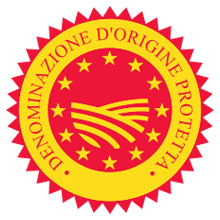Taggiasca



Taggiasca


The Taggiasca olive is a historic, rare, and valuable variety, distinguished by its unmistakable flavour and delicacy. It was introduced to Liguria between the late 7th and early 8th centuries, brought by the monks of Saint Columbanus from the Lerins monastery in Provence. Taggiasca olive oil has very low acidity, resulting in an extremely low percentage of oleic acid, less than 0.5%, which attests to the product’s high organoleptic qualities. Its defining characteristics include a fragrant aroma, a fruity flavour that is not overly intense but leans towards sweetness, with hints of pine nut or raw artichoke, along with a subtle spiciness. It should be stored in dark, cool, and dry conditions and primarily consumed raw.
Insights
The harvest of Taggiasca olives takes place from November to February. During this period, the terraces on the Ligurian hills, known as "fasce," are coloured by nets spread beneath the trees for the olive gathering process. Once ripe, the olives are removed from the tree using rods and poles, which are manually passed through the branches. The harvested olives are then selected and sent to the mill on the same day for cold pressing.
Features
The Taggiasca olive boasts an aromatic and fruity flavour, making it the most esteemed and recognised olive variety from Liguria. It is especially characteristic of the western Ligurian region, particularly within the province of Imperia. This cultivar has a small amount of flesh but an exceptionally high oil content (25-26%). The oil derived from it is highly sought after, with a yellow hue (yellow-green in the Savona area) and an intense yet delicate aroma. It is celebrated for its lightness and its smooth, sweet flavour.
How it's made
The extraction process for olive oil is still predominantly carried out using traditional stone mills and hydrostatic presses, although some mills have adopted more modern techniques, such as continuous cycle milling. This contemporary method ensures high yields, maintains a consistent temperature, and preserves the organoleptic properties of the fruit. In traditional milling, the olives are passed through granite or colombina stone mills, which crush the fruit prior to the pressing stage. The crushed olives are then placed inside spurtin, which are fibre discs made from coconut (or synthetic materials) with a central perforation, allowing them to be stacked on hydraulic presses. These presses extract the oil must from the olive pulp. The freshly separated oil is allowed to rest in steel vats to prevent oxidation from the sediment and to enable the dregs to settle naturally. Oil intended for immediate sale is filtered before being brought to market.
Experience a journey through ligurian flavours
- Recipes
- Itineraries
- Experiences



